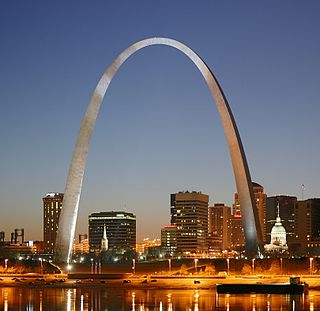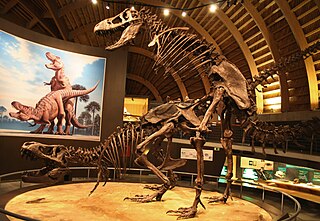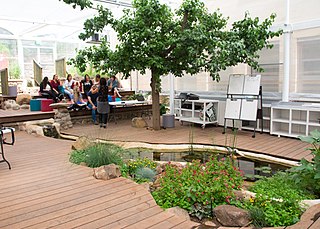!["wil cuman," (
.mw-parser-output .IPA-label-small{font-size:85%}.mw-parser-output .references .IPA-label-small,.mw-parser-output .infobox .IPA-label-small,.mw-parser-output .navbox .IPA-label-small{font-size:100%}
Old English pronunciation: [/'wil,ku.man/]
) an Old English welcome phrase, which was used over a thousand years ago and evolved into the modern English "welcome". Beowulf - wil cuman.jpg](http://upload.wikimedia.org/wikipedia/commons/thumb/0/01/Beowulf_-_wil_cuman.jpg/220px-Beowulf_-_wil_cuman.jpg)


A welcome is a kind of greeting designed to introduce a person to a new place or situation, and to make them feel at ease. The term can similarly be used to describe the feeling of being accepted on the part of the new person.
!["wil cuman," (
.mw-parser-output .IPA-label-small{font-size:85%}.mw-parser-output .references .IPA-label-small,.mw-parser-output .infobox .IPA-label-small,.mw-parser-output .navbox .IPA-label-small{font-size:100%}
Old English pronunciation: [/'wil,ku.man/]
) an Old English welcome phrase, which was used over a thousand years ago and evolved into the modern English "welcome". Beowulf - wil cuman.jpg](http://upload.wikimedia.org/wikipedia/commons/thumb/0/01/Beowulf_-_wil_cuman.jpg/220px-Beowulf_-_wil_cuman.jpg)


A welcome is a kind of greeting designed to introduce a person to a new place or situation, and to make them feel at ease. The term can similarly be used to describe the feeling of being accepted on the part of the new person.
In some contexts, a welcome is extended to a stranger to an area or a household. "The concept of welcoming the stranger means intentionally building into the interaction those factors that make others feel that they belong, that they matter, and that you want to get to know them". [1] It is also noted, however, that "[i]n many community settings, being welcoming is viewed as in conflict with ensuring safety. Thus, welcoming becomes somewhat self-limited: 'We will be welcoming unless you do something unsafe'". [2] Different cultures have their own traditional forms of welcome, [3] and a variety of different practices can go into an effort to welcome:
Making a welcome is not a physical fabrication, though welcome may be embodied and fostered by appropriate physical arrangements. There can be an aesthetics of welcome. What is there when one makes a welcome? No thing really, and yet more than any thing. When one makes a welcome one creates the conditions that promise of home. One makes it possible for the other not any longer to feel outside or out of it, but to feel at home. [4]
Indications that visitors are welcome can occur at different levels. For example, a welcome sign, at the national, state, or municipal level, is a road sign at the border of a region that introduces or welcomes visitors to the region. [5] A welcome sign might also be present for a specific community, or an individual building. One architect suggests that "[a] primary distinction between a gateway and a Welcome sign is that the gateway is usually designed and built by an outsider, a developer or architect, while the Welcome sign has been designed and built by an inside member of the community". [6] A welcome mat is a doormat that welcomes visitors to a house or other building by providing them with a place to wipe their feet before entering.
Another community tradition, the welcome wagon, a phrase that originally referred to an actual wagon containing a collection of useful gifts collected from residents of an area to welcome new people moving to that area.

The Gateway Arch is a 630-foot-tall (192 m) monument in St. Louis, Missouri, United States. Clad in stainless steel and built in the form of a weighted catenary arch, it is the world's tallest arch and Missouri's tallest accessible structure. Some sources consider it the tallest human-made monument in the Western Hemisphere. Built as a monument to the westward expansion of the United States and officially dedicated to "the American people", the Arch, commonly referred to as "The Gateway to the West", is a National Historic Landmark in Gateway Arch National Park and has become an internationally recognized symbol of St. Louis, as well as a popular tourist destination.

A park is an area of natural, semi-natural or planted space set aside for human enjoyment and recreation or for the protection of wildlife or natural habitats. Urban parks are green spaces set aside for recreation inside towns and cities. National parks and country parks are green spaces used for recreation in the countryside. State parks and provincial parks are administered by sub-national government states and agencies. Parks may consist of grassy areas, rocks, soil and trees, but may also contain buildings and other artifacts such as monuments, fountains or playground structures. Many parks have fields for playing sports such as baseball and football, and paved areas for games such as basketball. Many parks have trails for walking, biking and other activities. Some parks are built adjacent to bodies of water or watercourses and may comprise a beach or boat dock area. Urban parks often have benches for sitting and may contain picnic tables and barbecue grills.

In rhetoric, a rhetorical device, persuasive device, or stylistic device is a technique that an author or speaker uses to convey to the listener or reader a meaning with the goal of persuading them towards considering a topic from a perspective, using language designed to encourage or provoke an emotional display of a given perspective or action. They seek to make a position or argument more compelling than it would otherwise be.

The social environment, social context, sociocultural context or milieu refers to the immediate physical and social setting in which people live or in which something happens or develops. It includes the culture that the individual was educated or lives in, and the people and institutions with whom they interact. The interaction may be in person or through communication media, even anonymous or one-way, and may not imply equality of social status. The social environment is a broader concept than that of social class or social circle.
Cosmopolitanism is the idea that all human beings are members of a single community. Its adherents are known as cosmopolitan or cosmopolite. Cosmopolitanism is both prescriptive and aspirational, believing humans can and should be "world citizens" in a "universal community". The idea encompasses different dimensions and avenues of community, such as promoting universal moral standards, establishing global political structures, or developing a platform for mutual cultural expression and tolerance.

The Irwin Conference Center was designed by Eero Saarinen and built in 1954 in Columbus, Indiana, United States. It is currently owned and operated by Cummins, whose world headquarters is located across Jackson Street in the Cummins Corporate Office Building. In recognition of its unique and beautiful design, the resource was designated a National Historic Landmark by the National Park Service in 2001.
Crime prevention through environmental design (CPTED) is an agenda for manipulating the built environment to create safer neighborhoods.

Xenia is an ancient Greek concept of hospitality. It is almost always translated as 'guest-friendship' or 'ritualized friendship'. It is an institutionalized relationship rooted in generosity, gift exchange, and reciprocity. Historically, hospitality towards foreigners and guests was understood as a moral obligation. Hospitality towards foreign Hellenes honored Zeus Xenios, patrons of foreigners.

Hospitality is the relationship of a host towards a guest, wherein the host receives the guest with some amount of goodwill and welcome. This includes the reception and entertainment of guests, visitors, or strangers. Louis, chevalier de Jaucourt describes hospitality in the Encyclopédie as the virtue of a great soul that cares for the whole universe through the ties of humanity. Hospitality is also the way people treat others, for example in the service of welcoming and receiving guests in hotels. Hospitality plays a role in augmenting or decreasing the volume of sales of an organization.
Southern hospitality is a phrase used in American English to describe a cultural stereotype of the Southern United States, with residents perceived to show kindness, warmth, and welcoming of visitors to their homes, or to the South in general.

The Ann Arbor Hands-On Museum, located in Ann Arbor, Michigan, United States, specializes in interactive exhibits with the goal of helping both children and adults discover the scientist within them by promoting science literacy through experimentation, exploration, and education.
The Death and Life of Great American Cities is a 1961 book by writer and activist Jane Jacobs. The book is a critique of 1950s urban planning policy, which it holds responsible for the decline of many city neighborhoods in the United States. The book is Jacobs' best-known and most influential work.

Hotel design involves the planning, drafting, design and development of hotels. The concept of hotel design is rooted in traditions of hospitality to travellers dating back to ancient times, and the development of many diverse types of hotels has occurred in many cultures. For example, the advent of rail travel in the early 1900s led to the planning, design and development of hotels near railroad stations that catered to rail travelers. Hotels around Grand Central Terminal in New York City are an example of this phenomenon. Hotel interior design and styles are very diverse, with numerous variations existent.
A community of place or place-based community is a community of people who are bound together because of where they reside, work, visit or otherwise spend a continuous portion of their time. Such a community can be a neighborhood, town, coffeehouse, workplace, gathering place, public space or any other geographically specific place that a number of people share, have in common or visit frequently. A community offers many appealing features of a broader social relationship: Safety, familiarity, support and loyalties as well as appreciation. Appreciation that is founded on efforts and contribution to the community, rather than the efforts, rank or status of an individual.
The defensible space theory of architect and city planner Oscar Newman encompasses ideas about crime prevention and neighborhood safety. Newman argues that architectural and environmental design plays a crucial part in increasing or reducing criminality. The theory developed in the early 1970s, and he wrote his first book on the topic, Defensible Space, in 1972. The book contains a study from New York that pointed out that higher crime rate existed in high-rise housing projects than in low-rise complexes. This, he concluded, was because residents felt no control or personal responsibility for an area occupied by so many people. Throughout his study, Newman focused on explaining his ideas on social control, crime prevention, and public health in relation to community design.

A therapeutic garden or wellness garden is an outdoor garden space that has been specifically designed to meet the physical, psychological, social and spiritual needs of the people using the garden as well as their caregivers, family members and friends.

Exhibit design is the process of developing an exhibit—from a concept through to a physical, three-dimensional exhibition. It is a continually evolving field, drawing on innovative, creative, and practical solutions to the challenge of developing communicative environments that 'tell a story' in a three-dimensional space.
RIBA Competitions is the Royal Institute of British Architects' unit dedicated to organising architectural and other design-related competitions.

Lego House is a 12,000-square metre building filled with 25 million Lego bricks in Billund, Denmark, located near Legoland and the headquarters of The Lego Group. It is also known as Home of the Brick with reference to Billund, where Lego originates. Visitors can experience a variety of activities during their visit, including physically and digitally building with Lego bricks, programming robots and animating models. The centre's visitor experience includes four experience zones, two exhibitions and the Lego Museum, which showcases the history of the Lego brand and company.

Biophilic design is a concept used within the building industry to increase occupant connectivity to the natural environment through the use of direct nature, indirect nature, and space and place conditions. Used at both the building and city-scale, it is argued that this idea has health, environmental, and economic benefits for building occupants and urban environments, with few drawbacks. Although its name was coined in recent history, indicators of biophilic design have been seen in architecture from as far back as the Hanging Gardens of Babylon.